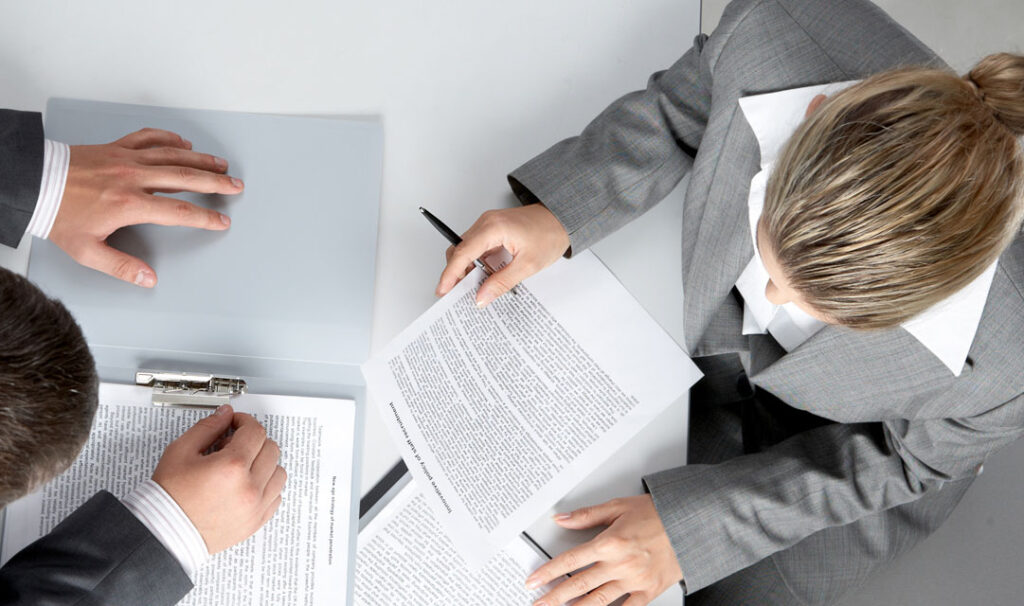Professional negligence can have serious consequences, it can lead to financial loss, disrupted projects, and prolonged disputes. If you think you’ve been affected by a professional’s alleged negligence, it’s important to follow the pre-action protocol for professional negligence before taking it to court. Seeking expert legal advice at this stage can help avoid costly delays and improve the chances of a successful resolution. Law firms such as JMP Solicitors offer expert guidance through the process, ensuring compliance with the Civil Procedure Rules and providing the best possible chance of a successful resolution. Their expert legal team will help clients assess the potential claim, gather all the relevant documents, and determine the best way to proceed, whether that’s through negotiations or court proceedings.
This article is going to give a thorough rundown of the professional negligence pre-action protocol, covering its key stages and practical guidance for parties involved in professional negligence disputes.
What is Professional Negligence?
Professional negligence comes into play when a professional adviser, such as a solicitor, accountant, surveyor, financial advisor, or construction professional, doesn’t provide services with the competence and care reasonably expected in their field. It can result in some serious financial loss for the client. Common examples include:
- A financial advisor providing incorrect investment advice.
- A solicitor missing important deadlines or providing poor legal advice.
- An accountant misreporting financials or mishandling tax returns.
- A surveyor or architect producing inaccurate valuations or defective designs.
When a professional fails to meet the standards of their profession, they’re breaching their duty of care to the client, which could lead to a claim of professional negligence. Professionals usually carry insurance which allows clients to claim back any losses from their professional indemnity insurance.
What’s the Purpose of the Pre-Action Protocol?
The Professional Negligence Pre-Action Protocol (aka PAP) is designed to make things easier on everyone involved.
- It encourages early exchange of information between all parties.
- It encourages both parties to resolve the dispute through alternative means if possible.
- It helps clear up any misunderstandings before the situation escalates.
- It helps minimize unnecessary legal costs.
- It ensures compliance with the civil procedure rules and practice directions issued by the Civil Procedure Rule Committee.
By following the professional negligence PAP, parties will be showing that they tried to resolve things sensibly and efficiently, which can help if the claim ends up in court. Failure to comply may allow the court to impose sanctions or allocate costs differently.
Key Stages of the Professional Negligence Pre-Action Protocol
1. Preliminary Notice – or Letter of Claim
The pre-action process usually begins with a preliminary notice or detailed letter of claim. This document should:
- Give a brief outline of the claimant’s grievance.
- Clearly state the claimant’s version of events and what they think the other party did wrong.
- Break down how much money the claimant’s lost because of it.
- Highlight any key dates that are relevant to the case.
- Ask the other party to respond back with detailed answers within a reasonable amount of time.
Getting some expert advice at this stage can be a good idea. It’s an opportunity to ensure everything is right with the preliminary notice.
2. The Defendant’s Response
When the defendant professional or their professional indemnity insurer receives the claimant’s preliminary notice, they should acknowledge receipt and then get back with their own response. In their response, they might:
- Admit they were wrong, and hope to settle early .
- Deny the claim, and explain why, maybe even include some expert evidence to back up their arguments.
- Ask for a bit more info or clarification on a few points.
Their response should cover all the key documents that are relevant to the preliminary notice, and give a rough idea of how much they think they owe you. However, if they say no, then that’s the sign to move on to the next stage of the protocol.
3. Exchange of Key Documents
When it comes to the professional negligence pre-action stage, one of the most important parts is gathering all the relevant documents. This might be a contract, an email thread, financial records, or even an expert report or two, anything that might give a good indication of the value of the claim and how strong the claimant’s chances are.
At this stage, claimants need to understand that they are not an expert, so seeking advice from a professional negligence lawyer or a whole team of experienced lawyers is a good idea. That way, the claimant can be sure they’re moving in the right direction and sticking to the rules.
4. Alternative Dispute Resolution
The pre-action protocol encourages alternative dispute resolution, which includes methods that avoid the need for a formal court case. Some of the methods include:
- Early Neutral Evaluation – Seek an independent expert to give their view on the claim.
- Mediation and negotiation – Meet with the other party, with a facilitator on hand to help settle a deal.
- Settlement Proposal Exchange – Each party proposes ideas for a resolution that suits their needs, all without court proceedings. The good news is that this sort of method is often a lot more cost efficient and effective than a full-on court case. In fact, for those insuring professionals against negligence claims, alternative dispute resolution is often the preferred route. It saves them the extra hassle and expense of further court proceedings and all the extra bills that come with them.
5. Expert Evidence
When it comes to most professional negligence claims, gathering expert evidence is essential to establish:
- Breach of duty or alleged professional fault.
- What the financial loss suffered by the claimant.
- Whether the claim is a related dispute or involves the same dispute as another.
These experts can also give the claimant an idea of what the actual financial value of the claim is, this is a major consideration for professional indemnity insurers when deciding how to deal with a negligence claim.
6. Further Action and Commencing Court Proceedings
If the parties can’t reach an agreement, the claimant may consider heading to court. Before they do that, they need to make sure they’ve followed the pre-action protocols. The PAP is there to ensure people are on the same page and to prevent as much delays as possible during the official process.
Courts can, if needed, order parties to hand over documentation, provide further information or even take part in some sort of mediation or dispute resolution. If a party fails to follow the rules of the professional negligence PAP, the court may take this into account when deciding how to allocate legal costs and how to resolve the dispute.
7. Key Points To Consider For Parties Involved
At this stage in the proceedings, both claimants and defendant professionals need to keep in mind:
- Keeping a record of when the key dates were, and all the correspondence that went on
- Maintaining copies of all the relevant documents.
- Responding to reasonable requests for information.
- Seeking advice from a professional negligence solicitor early on.
- Considering whether the financial loss is worth the legal costs involved.
The Civil Justice Council and the Civil Procedure Rule Committee highlight the importance of early engagement and protocol compliance to prevent disputes from escalating to unnecessary court proceedings.
8. The Benefits of Following The Professional Negligence Pre-Action Protocol
By following the professional negligence pre-action protocol, parties can benefit in all of the following ways:
- It lays out a clear path for dealing with disputes in a fair way.
- Helps parties reach settlements through alternative dispute resolution.
- Reduces unnecessary financial loss and legal costs.
- Gives the claimant a better position if court proceedings do become necessary.
- Encourages both parties to exchange information and key documents early on, which helps subsequent court determination.
Following the negligence pre-action protocol shows that everyone involved is serious about dealing with the dispute in a responsible and efficient way.
Conclusion
The professional negligence pre-action protocol is crucial for handling professional negligence claims. Whether it’s a dispute about some construction work, or a financial advisor who made a mistake, following the pre-action stage procedures ensures that parties are prepared to deal with any potential court proceedings. It also gives them the best chance of getting the issue sorted out through alternative dispute resolution.
For anyone facing a potential professional negligence claim, following the professional negligence PAP is more than just a formality, it’s a smart move that helps protect rights, facilitates fair resolution, and lays a solid foundation if the claim ends up in court.

